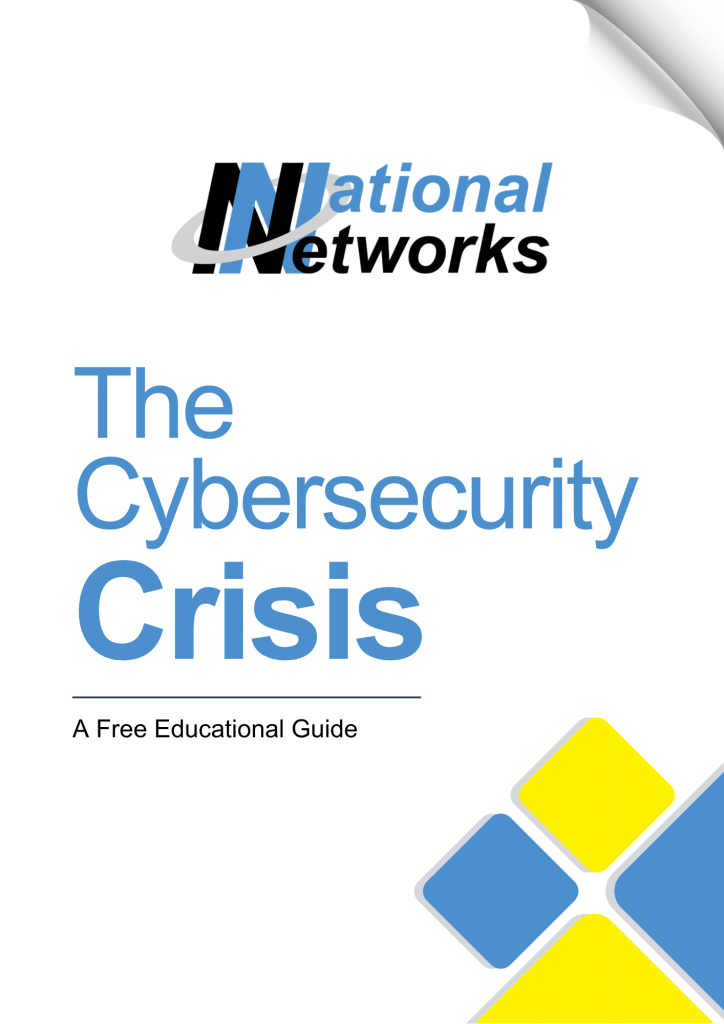 When you think about cybersecurity risks, you probably picture phishing emails or weak passwords. But there’s another threat hiding inside businesses across Texas and Louisiana — and it’s coming from employees who are just trying to do their jobs.
When you think about cybersecurity risks, you probably picture phishing emails or weak passwords. But there’s another threat hiding inside businesses across Texas and Louisiana — and it’s coming from employees who are just trying to do their jobs.
It’s called Shadow IT, and it’s one of the fastest-growing security problems we see at National Networks. Every time someone downloads an unapproved app or uses an unsanctioned cloud service, they create vulnerabilities that can put your entire network at risk.
What Is Shadow IT?
Shadow IT happens when employees use software, apps, or cloud services without approval from your IT department. Some common examples we see with businesses across the Gulf Coast include:
- Saving work documents on personal Google Drive or Dropbox accounts
- Using project management tools like Trello, Asana, or Slack without IT oversight
- Messaging through apps like WhatsApp or Telegram on company devices
- Running AI tools or automation software without proper cybersecurity vetting
At National Networks, we understand that most employees don’t mean any harm — they just want to get work done faster. But without the right IT support and security measures, these "shortcuts" can open the door to serious cyber risks.
Why Shadow IT Puts Your Business At Risk
When our managed IT services team in Texas and Louisiana works with businesses, Shadow IT is often a hidden vulnerability. Here's why it’s dangerous:
- Unsecured Data Sharing – Personal apps aren't designed to protect sensitive business information, increasing the risk of leaks.
- Missed Security Updates – Unauthorized apps often miss critical security patches, leaving your network exposed.
- Compliance Violations – For industries governed by HIPAA, PCI-DSS, or GDPR, using unapproved tools can result in hefty fines.
- Malware And Phishing Risks – Unauthorized apps are prime targets for malware and ransomware attacks.
- Credential Theft – Without multi-factor authentication (MFA), employees’ accounts — and your company systems — are more vulnerable.
Real-world example? Earlier this year, researchers uncovered the "Vapor" app scandal — 300+ malicious apps downloaded over 60 million times, designed to hijack devices and steal user data. This case shows just how easily Shadow IT can sneak into even legitimate app stores.
Why Employees Turn To Shadow IT
In most cases, employees aren't being reckless — they're simply frustrated. They might:
- Think approved tools are too slow or outdated
- Want to be more productive
- Not realize the real security risks
- Feel that IT approval takes too long
Unfortunately, even small shortcuts can create massive security gaps if not addressed.
How To Stop Shadow IT Before It Hurts Your Business
At National Networks, we believe that stopping Shadow IT starts with proactive IT management. Here’s how to stay protected:
- Create An Approved App List
Work with your IT partner to define trusted, secure applications for employee use — and review it regularly. - Restrict Unauthorized Downloads
Implement device management tools that block downloads unless apps are IT-approved. - Train Employees On The Risks
Educate your team on why Shadow IT isn’t harmless — it’s a real cybersecurity threat that could impact everyone. - Monitor Your Network
Use network monitoring solutions to detect and respond to unauthorized app usage before it becomes a serious problem. - Strengthen Endpoint Security
Protect every device with endpoint detection and response (EDR) tools to catch suspicious activity fast.
Don’t Let Shadow IT Put Your Business At Risk
Ignoring Shadow IT could lead to a security breach, a compliance violation — or even a full network shutdown.
The good news? You don’t have to handle it alone.
At National Networks, we help businesses across Texas and Louisiana stay secure with smart, tailored cybersecurity solutions.
Start with a FREE Network Security Assessment. We’ll uncover hidden vulnerabilities, flag unauthorized apps, and help you lock down your systems — before it’s too late.
👉 Click here to schedule your FREE assessment today! https://ntwo.com/free-network-assessment/

